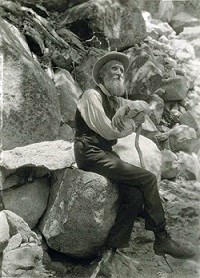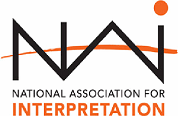
NPS Photo Developing skills as an effective park communicatorHave you ever been to a park program that captivated you and deepened your appreciation of something about that park? That is the art of interpretation. Interpretation involves helping visitors form meaningful emotional, and intellectual connections to the park. This might happen during a formal presentation or an activity like a guided walk or tour. It can also happen during an informal conversation with a visitor or when answering questions. Why do you think it is important to help visitors make these connections with the park? Forging connections is part of our mission. The National Park Service was formed to preserve and protect for the enjoyment of future generations. Enjoyment is enhanced by connection, and preservation is inspired by it. The National Park Service has partnered with Indiana University and a number of other conservation organizations to train people working in our parks, including vendor employees and volunteers, in the skills of interpretation. They have developed many online courses. Some of the basic courses are free such as Foundations of Interpretation. Park partners may receive a discount for some of the fee courses. 
Resources for developing interpretive skillsWhat do "Interpreters" do? For most people an interpreter is one who conveys the meaning of something said or written in one language to another language. For Interpreters at Mount Rainier the understanding and meaning being conveyed is not from one language to another but from a resource, such as the mountain, glaciers, rocks, trees or flowers, to the hearts and minds of the visitors. Another term for interpreters could be visitor experience specialists. They provide orientation, information and inspiration in the right amounts and at the right times so that visitors will have more enjoyable, meaningful and complete experiences. John Muir was the first to use the analogy of interpretation as the means of relaying his love for nature to others. In his Yosemite Notebook (1896) he wrote, "I'll interpret the rocks, learn the language of flood, storm and the avalanche. I'll acquaint myself with the glaciers and wild gardens, and get as near the heart of the world as I can." His influence and writings changed forever the way mankind views nature. Effective interpretation is an art and an acquired skill. As with every skill, it must be learned and practiced until it is finely honed. A good place to start learning the art of interpretation is to take a free online courses. There are even academic degree programs available at many universities for those who are interested in pursuing the field as a career. Another easily accessible source to learn about interpretation is to read the works of those who first mapped the basics of the of the skill:

National Association for Interpretation (NAI)The NAI is a not-for-profit professional organization dedicated to advancing the profession of heritage interpretation. Individual members include those who work at parks, museums, nature centers, zoos, botanical gardens, aquariums, historical and cultural sites, commercial tour companies, and theme parks. The NAI has several professional level training certifications. The Certified Interpretive Guide (CIG) is intended for park guides, interpreters, docents and tour leaders. It is for individuals who present formal interpretive programs. The curriculum covers the foundations of interpretation as well as presentation skills. The Certified Interpretive Host (CIH) program is for people such as front desk, maintenance, retail, food, beverage staff and others who meet the public. The CIH course includes customer service and informal interpretation skill development. It is important to recognize all these people share an important role in interpretation at Mount Rainier National Park. Interpretive themesThe stories of the park that tell why Mount Rainier is a special place are called the park's significance statements. Interpretation is the art of telling those stories in such a way that it helps visitors form a personal connection with the park. To help tell the park's stories, the significance statements are distilled into short factual statements called the primary interpretive themes. Knowing these interpretive themes and using them when talking with visitors will help give visitors a fuller understanding and appreciation for this beautiful place. |
Last updated: November 8, 2019
